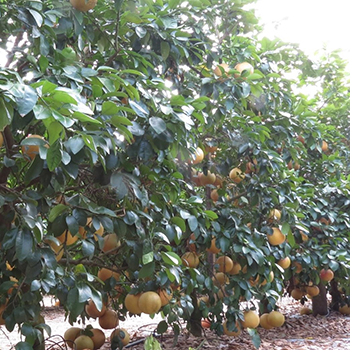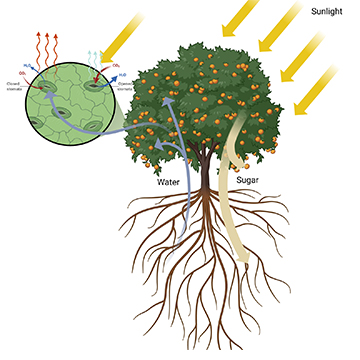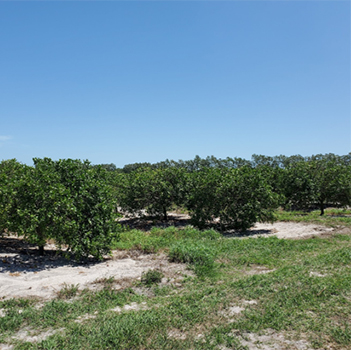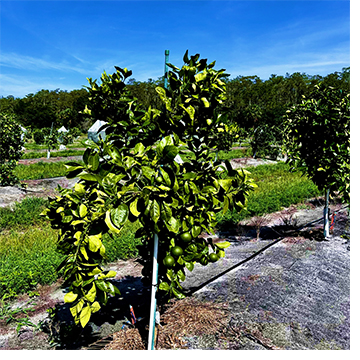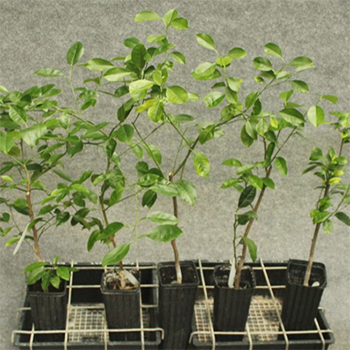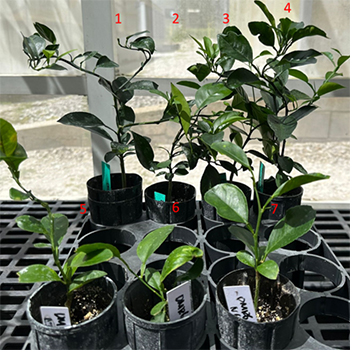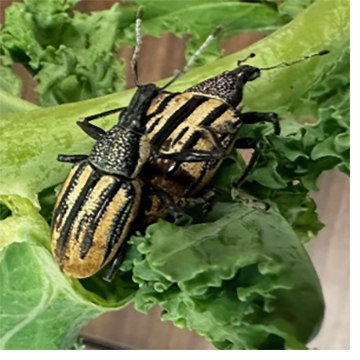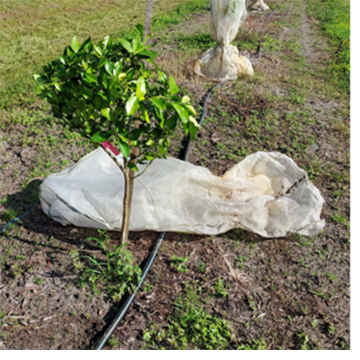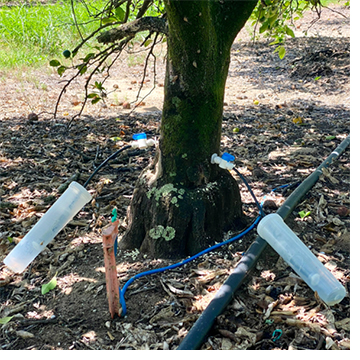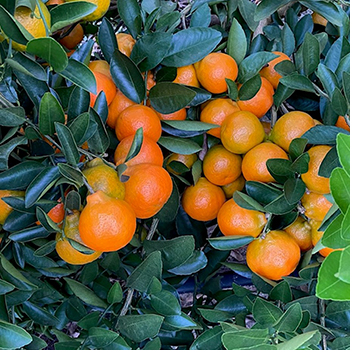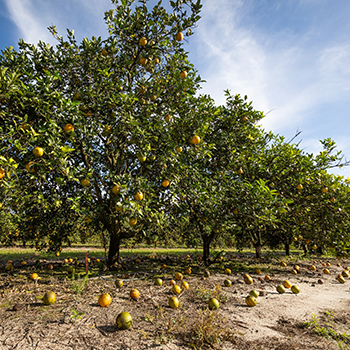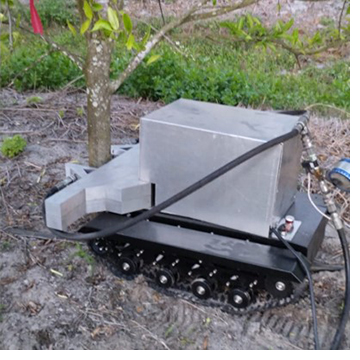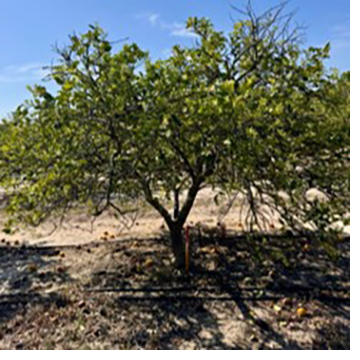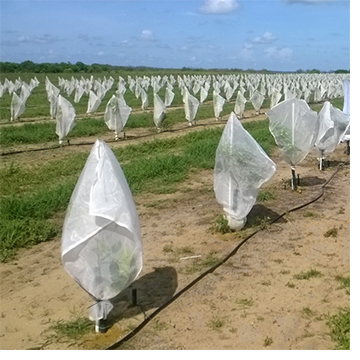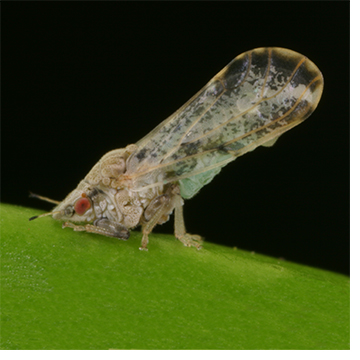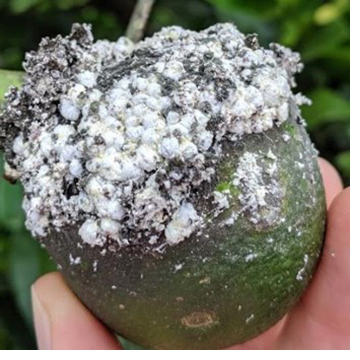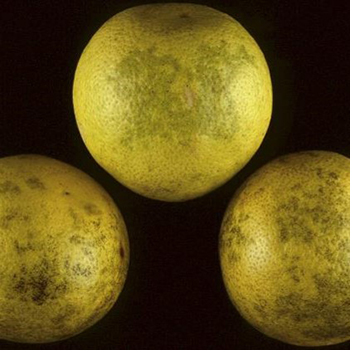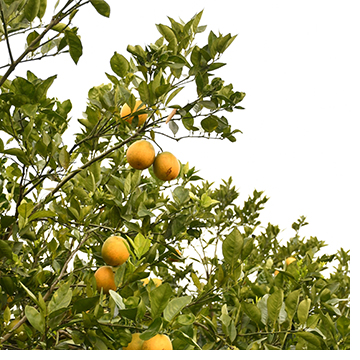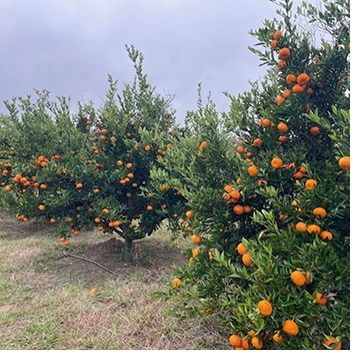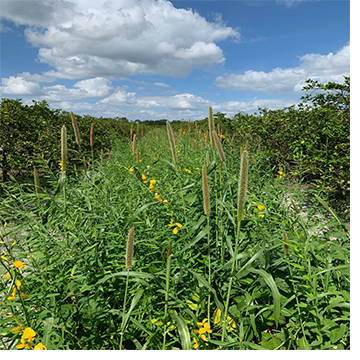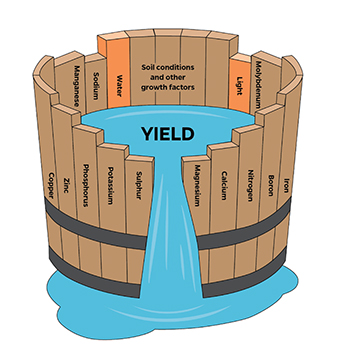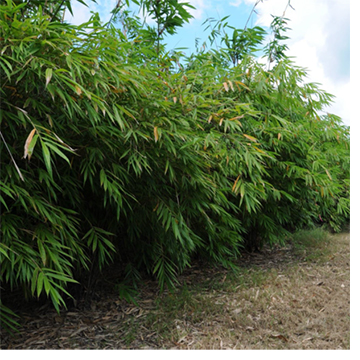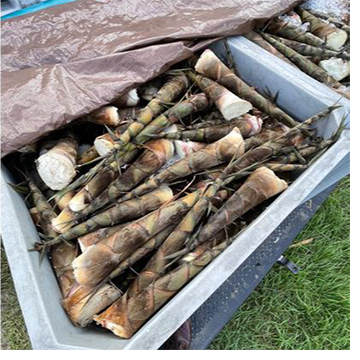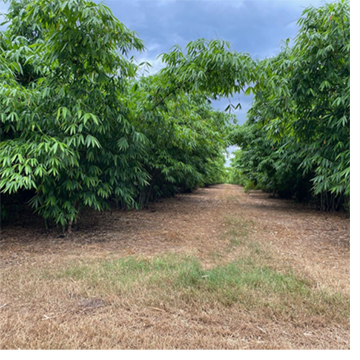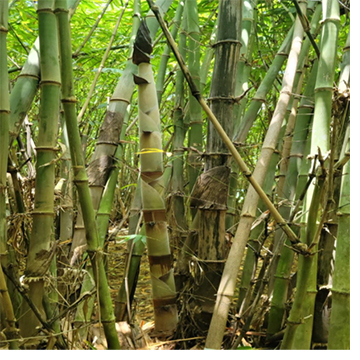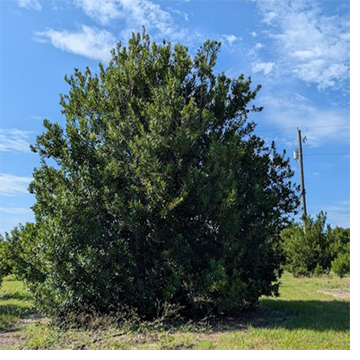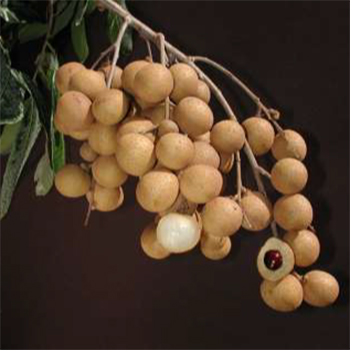2025 Citrus and Specialty Crop Expo
*Click on the presentation title or image to view the PDF file.
Florida Citrus Under Protective Screen – From Research Prototype to
Commercial Production
Arnold Schumann
UF/IFAS Citrus Research and Education Center
This presentation examines advancements in Citrus Under Protective Screen (CUPS) production systems, emphasizing the transition from experimental research to large-scale commercial adoption. Key topics include the agronomic and economic benefits of CUPS, the challenges associated with implementation, and recommended best practices for Florida citrus growers. The presentation provides growers with the knowledge needed to make informed decisions regarding the integration of CUPS into their production systems and potential pitfalls to avoid.
How does HLB harm tree health and what can we do about it?
Christopher Vincent
UF/IFAS Citrus Research and Education Center
Current research demonstrates the ways HLB reduces sugar movement in citrus trees—and what that means for your groves. This presentation highlights ongoing trials with injection treatments designed to slow the spread of HLB bacteria, timed to the tree’s natural growth cycle. The results point toward more precise, targeted management strategies that Florida growers can put into practice.
Understanding HLB Tolerance
Amit Levy
UF/IFAS Citrus Research and Education Center
Understanding HLB tolerance can help researchers identify promising targets for making trees more resistant. Researchers compared susceptible and tolerant varieties and found that the tolerant varieties are more efficient in sugar transport and lose less water. Importantly, it was noticed that tolerant HLB varieties (including transgenic NPR1 lines developed by IFAS) show strong immunity that is required to maintain a balanced immune response.
Genetic Transformation of Citrus: Understanding Transformation Timelines, Progress Made and Future Expectations
Manjul Dutt
UF/IFAS Citrus Research and Education Center
The presentation focuses on how transgenic citrus trees are developed, the time frame taken to evaluate them, how they differ from traditional hybrids, and the rigorous safety assessments they undergo before being released. Details are also provided on the transgenic citrus under evaluation at UF/IFAS.
Using Citrus Tristeza Virus (CTV)-Based Vector as a Platform for the Management of Huanglongbing (HLB)
Choaa El Mohtar
UF/IFAS Citrus Research and Education Center
Candidatus Liberibacter asiaticus (CLas), the causative agent of HLB, is transmitted between trees by the Asian citrus psyllid (ACP) insect vector. CLas and citrus tristeza virus (CTV) coexist in the phloem tissue of citrus where ACP feeds. This presentation discusses how researchers are using systemic but nonvirulent CTV-T36 based vectors to deliver potential therapeutics to the citrus phloem tissue to induce resistance/tolerance to HLB.
Updates on Improving Citrus Resistance against HLB via CRISPR Genome Editing
Nian Wang
UF/IFAS Citrus Research and Education Center
This presentation discusses how the non-transgenic Eds1 edited ‘Valencia’ and ‘Hamlin’ are likely tolerant to HLB, preventing HLB disease symptoms and keeping the tree productive. The presentation also discusses how the non-transgenic Dmr6-edited ‘Valencia’ and ‘Hamlin’ are likely resistant to HLB. Details on the timeline to trial these gene-edited plants in the field is provided.
Potential of RNAi-Based Strategies for the Control of Citrus Root Weevil
Nabil Killiny
UF/IFAS Citrus Research and Education Center
The citrus rootweevil, Diaprepes abbreviatus, continues to be an important pest of Florida citrus. This presentation discusses how RNA interference is a very successful control strategy for many other pest weevil species. Current research highlighted in this presentation demonstrates that use of RNAi can also be an effective and environmentally friendly solution for Diaprepes control in Florida citrus groves.
Optimizing Young Citrus Tree Protection against HLB
Fernando Alferez
UF/IFAS Southwest Florida Research and Education Center
Individual protective covers (IPC) are a common tool for HLB management. In this presentation, learn about best practices for installing IPCs to maximize benefits and reduce inputs, the varieties suitable for IPCs, and the answer to the question: Can we recover HLB-affected young trees by installing IPCs later?
Best Practices for Applying Oxytetracycline by Trunk Injection
Ute Albrecht
UF/IFAS Southwest Florida Research and Education Center
Understanding what to do and what not to do when performing trunk injections of oxytetracycline (OTC) in HLB-affected citrus trees can help maximize OTC uptake. In this presentation, emphasis will be on the best month of injection and practices to improve distribution and enhance the positive effects of the therapy.
Effects of OTC Trunk Injections on Marathon, Bingo, 1424, Sugar Belle and
OLL-8 Scions
John Chater
UF/IFAS Citrus Research and Education Center
This presentation will highlight several new citrus varieties released through the UF/IFAS breeding program and how they are performing in Florida plantings. It will cover recent data on the impact of oxytetracycline (OTC) treatments and rootstock choices on these new selections. Results from field trials with OLL-8, Sugar Belle®, and other promising varieties will be shared, with a focus on practical insights for growers evaluating their options.
Research Update: OTC Adoption and Outcomes
Tara Wade
UF/IFAS Southwest Florida Research and Education Center
In 2024, we conducted a statewide online survey of citrus growers to better understand how OTC trunk injection is being used and what results growers are seeing. The survey gathered information on costs, yield response, tree health, cultural practices, and farm demographics. This presentation will share those results, giving citrus growers an opportunity to see how their own experiences compare with others around the state and to better evaluate the potential benefits of trunk injection in their groves.
Advancements in Automated Trunk Injection of Citrus Trees
Yiannis Ampatzidis
UF/IFAS Southwest Florida Research and Education Center
To overcome the limitations of manual trunk injections of therapeutic materials in citrus trees, this presentation discusses the development of an innovative, automated needle-based trunk injection system designed specifically for HLB-affected citrus trees. This system significantly reduces application time, achieving injections in under a minute per tree, while lowering costs.
Improving Tree Health with PGRs for Better Tree Productivity
Tripti Vashisth
UF/IFAS Citrus Research and Education Center
Various types of plant growth regulators are available to Florida citrus growers. This presentation will discuss the usage of PGRs and their potential in mitigating huanglongbing symptoms in bearing trees. The use of PGRs in combination with antibiotics as a potential strategy to enhance the yield of HLB-affected trees will also be discussed.
Proposed Integrated Huanglongbing (HLB) Management Tools for Citrus
Ozgur Batuman
UF/IFAS Southwest Florida Research and Education Center
This presentation discusses the development of integrated pest management (IPM) tools for HLB control in Florida citrus groves including the use of individual protective covers (IPC) on young trees at planting, the use of plant defense inducers to protect young shoots from re-infection by ACPs after IPC removal, and oxytetracycline injection and its automation to deliver therapeutics to the mature citrus trees more effectively.
Functional Strategy for Conservation Biological Control and Integrated
Psyllid Management
Jawwad Qureshi
UF/IFAS Southwest Florida Research and Education Center
This presentation will cover the distribution of Asian citrus psyllid (ACP) populations within citrus groves, comparing borders and interior areas, and how natural suppression can be measured using exclusion techniques. We will discuss how understanding this spatial distribution, along with the role of natural enemies, can help growers manage ACP populations more effectively while conserving biological control.
Developing a Multi-pest Management Strategy in Citrus
Lauren Diepenbrock
UF/IFAS Citrus Research and Education Center
The most recent information for several pests such as Asian citrus psyllid, lebbeck mealybug, Diaprepes root weevil , and Bulimulus snail will be discussed along with how to integrate management needs for multiple pests based on known activity patterns.
Greasy Green and Its Relationship to Rind Blotch
Megan Dewdney
UF/IFAS Citrus Research and Education Center
Greasy green has plagued grapefruit producers for several years, causing a significant reduction in profits. Researchers investigated whether there was a biological relationship between the greasy green disorder and the disease rind blotch. This presentation discusses the evidence that connects the disorder and the disease and what that means for grapefruit management.
Citrus Crop Insurance Considerations
Ariel Singerman
UF/IFAS Citrus Research and Education Center
Obtaining coverage under the Actual Production History (APH) policy has, on average, been economically beneficial for Florida citrus growers so far. The question going forward is whether APH will continue to be advantageous for growers to insure their crop. As it is explained throughout the presentation, the answer is: “it depends”.
Boosting Citrus Resilience: The Power of Silicon as a Beneficial Nutrient
Muhammad Shahid
UF/IFAS North Florida Research and Education Center
Silicon has a role in enhancing the health and productivity of citrus crops. This presentation highlights how silicon can improve plant resistance to environmental stressors such as drought, pests, and diseases. Emphasis is placed on recent research findings supporting silicon's ability to strengthen the plant defense system and stimulate natural defense mechanisms.
Methods to Measure Soil Health in Florida Citrus
Sarah Strauss
UF/IFAS Southwest Florida Research and Education Center
There are many ways to measure soil health, but not all are suited to Florida’s unique citrus soils. This presentation will highlight the most practical and reliable methods for evaluating soil health in citrus groves. It will also cover management practices that can improve soil conditions, helping growers track real improvements and make informed decisions for long-term grove productivity.
The 5 RS of Sustainable Citrus Production in the era of HLB
Davie Kadyampakeni
UF/IFAS Citrus Research and Education Center
This presentation will share results from multiple studies on improving citrus fertilization and irrigation practices. Topics include the use of macro- and micronutrients, the timing of fertilizer applications, and strategies for optimal irrigation scheduling to increase both water and nutrient use efficiency.
Bamboo Production and Its Potential
Michael Rogers
UF/IFAS Citrus Research and Education Center
This presentation will provide an overview of global bamboo production and explore opportunities for commercial bamboo in Florida. It will also provide an introduction to the clumping species of bamboo being grown commercially in Florida and the expected timelines from planting to first harvest.
Best Practices for Bamboo Establishment
Davie Kadyampakeni
UF/IFAS Citrus Research and Education Center
This presentation will share early lessons from Florida on irrigation and nutrient management for establishing clumping bamboo as a commercial crop. It will highlight growth and production responses, and provide practical guidance on optimal spacing and essential production practices, such as mulching and composting, to help growers maximize productivity.
Bamboo Farming
Kevin Barley
Florida Bamboo Growers Association
This presentation will share findings from a five-year study evaluating the economic profitability of bamboo production in Florida. It will also provide current data on bamboo shoot yields, harvesting operations, and market opportunities for fresh bamboo shoots, offering practical insights for growers considering bamboo as a crop.
Mechanical Harvesting of Bamboo
Daniel Hofstetter
UF/IFAS Agricultural and Biological Engineering
The most significant factor influencing the economic viability of bamboo production in Florida is the cost of harvesting and labor. This presentation will provide an update on the development of a mechanical harvesting system for bamboo culms at the University of Florida.
Macadamia in Florida: Potential and Considerations
Lauren Diepenbrock
UF/IFAS Citrus Research and Education Center
This presentation introduces the potential for growing macadamia in Florida. Included are key considerations for growers, including land preparation, variety selection, and the management of pests and diseases, particularly Phytophthora.
Considerations of Alternative Tree Crops - Avocados, Lychee, Longan, and Mango for Central Florida
Jonathan Crane
UF/IFAS Tropical Research and Education Center
This presentation will explore the different tree fruit crops that could be grown in central Florida. It will highlight key considerations for growers, including weather risks, horticultural practices, pest and disease management, and market competition, to help inform decisions when selecting a new crop.


